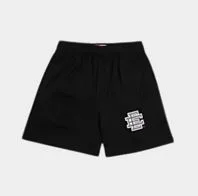How Do Windbreaker Jackets and Sunscreen Work Together to Enhance Outdoor Protection?
When planning outdoor activities, do you ever think about the science behind the products that keep you safe? Beyond comfort and style, modern innovations in clothing and skincare play a vital role in shielding us from environmental stressors. Two examples stand out: the windbreaker jacket, a staple in outdoor apparel, and sunscreen, the frontline defense against harmful ultraviolet (UV) radiation.
Examining these solutions together reveals how science, material engineering, and dermatological research converge to provide comprehensive protection.
Windbreaker Jackets: Engineering Lightweight Protection
The windbreaker jacket has evolved from simple outerwear into a scientifically engineered garment. Its primary function is to provide a barrier against wind chill, which can drastically lower body temperature and reduce comfort during outdoor activities.
Modern windbreakers are typically constructed using lightweight synthetic fibers such as nylon and polyester. These materials are woven tightly to block wind penetration while remaining breathable. Coatings like polyurethane (PU) or durable water repellent (DWR) finishes further enhance the jacket’s ability to resist moisture, making it suitable for unpredictable weather conditions.
Scientific advancements have also improved fabric properties. Microfiber technologies and nanocoatings create surfaces that repel water and dirt without adding bulk. Some windbreakers incorporate laminated membranes similar to those used in technical sportswear, which balance waterproofing with vapor permeability. This ensures that while external elements are kept out, perspiration can still escape, maintaining thermal comfort.
The lightweight nature of windbreakers also aligns with performance requirements. Athletes, hikers, and cyclists prefer them because they provide protection without restricting movement. This reflects how textile engineering has transformed the jacket into an indispensable tool for both casual wearers and professionals.
Sunscreen: Dermatological Science in Action
While windbreakers shield the body from external climatic forces, sunscreen works at the molecular level to protect the skin from UV radiation. Ultraviolet rays are divided into UVA and UVB. UVA penetrates deeper into the skin, accelerating aging and increasing the risk of skin cancers, while UVB primarily causes surface-level sunburn.
Sunscreens incorporate organic and inorganic filters to combat these rays. Organic filters, often referred to as chemical sunscreens, absorb UV radiation and release it as harmless heat. Examples include avobenzone and octocrylene. Inorganic filters, or physical sunscreens, such as zinc oxide and titanium dioxide, act by reflecting and scattering UV light.
Recent dermatological innovations have enhanced sunscreen formulations. Microfine particles ensure better transparency on the skin, eliminating the white residue once associated with physical sunscreens. Additionally, broad-spectrum formulations protect against both UVA and UVB, offering more comprehensive coverage.
Research also focuses on photostability, ensuring that filters do not degrade rapidly under sunlight. Combining UV filters with antioxidants like vitamin C or E helps neutralize free radicals generated by sun exposure. This not only prevents immediate burns but also reduces long-term risks such as DNA damage and premature aging.
Complementary Protection: The Intersection of Apparel and Skincare
The relationship between the windbreaker jacket and sunscreen illustrates the importance of layered defense. While sunscreen acts directly on exposed skin, windbreakers provide physical shielding for covered areas. Together, they reduce cumulative UV exposure, windburn, and environmental stress.
For instance, outdoor athletes who spend prolonged periods in direct sunlight benefit from both solutions. Sunscreen ensures continuous skin protection, while a lightweight windbreaker minimizes UV penetration through fabric and shields against temperature fluctuations. Similarly, casual users who combine these defenses during travel or leisure activities experience improved comfort and reduced health risks.
From a scientific standpoint, this layered approach demonstrates the integration of material science, dermatology, and environmental adaptation. It highlights how multiple innovations, each effective on its own, become more impactful when applied together.
Scientific Advancements Driving Innovation:
Both apparel and sunscreen industries are advancing rapidly, informed by nanotechnology, biomaterials, and data-driven design.
In windbreaker development, nanofiber membranes are enabling fabrics with enhanced breathability, self-cleaning properties, and improved resistance to environmental stressors. Smart textiles embedded with sensors are under research, potentially allowing real-time monitoring of temperature and UV exposure.
Sunscreen science is moving toward formulations with longer-lasting protection and multifunctional benefits. Beyond UV defense, some products incorporate infrared protection and blue-light shielding to address additional forms of radiation exposure. Furthermore, researchers are investigating biodegradable sunscreen ingredients that reduce ecological impact, particularly in marine environments.
Artificial Intelligence (AI) is playing a role in both fields. Apparel companies are using AI to simulate fabric behavior under various conditions, accelerating product development. Dermatology researchers apply AI algorithms to assess UV damage and optimize sunscreen formulations based on skin type and environmental factors.
Market Insights: Expanding Demand for Protection Products
The market for windbreaker jackets is witnessing steady growth, driven by increasing outdoor activities, sports participation, and demand for versatile apparel. Asia-Pacific regions, with their mix of urban and outdoor lifestyles, represent significant opportunities for expansion. Sustainability trends are also influencing buyer preferences, with consumers seeking eco-friendly fabrics and production methods.
The sunscreen market is experiencing robust growth globally, driven by heightened awareness of skin cancer risks and the cosmetic appeal of sun-safe skin. Dermatologist-recommended formulations and high-SPF products are seeing particularly strong demand. In addition, markets in emerging economies are expanding as awareness campaigns and rising incomes encourage regular sunscreen use.
Both sectors are converging toward consumer demands for products that are not only effective but also environmentally responsible. This trend is influencing manufacturing practices, research investments, and marketing strategies across industries.
Future Prospects: Toward Smarter and Safer Solutions
The future of outdoor protection lies in greater integration of technologies. Windbreaker jackets may evolve into multifunctional garments incorporating UV-blocking properties, temperature regulation, and wearable tech features. Sunscreens, meanwhile, will continue advancing toward formulations that last longer, adapt better to diverse skin types, and minimize ecological impact.
The potential for cross-industry collaboration is significant. For example, apparel companies could partner with dermatological researchers to create textiles infused with UV filters, reducing reliance on topical application. Similarly, data collected from wearable sensors could inform customized sunscreen recommendations.
This forward-looking trajectory reflects a broader principle: protection is no longer one-dimensional. Instead, it is a layered, intelligent, and adaptable system that draws from multiple fields of science and technology.
Conclusion:
The combined roles of the windbreaker jacket and sunscreen highlight how apparel and skincare technologies converge to enhance outdoor protection. While one serves as a physical barrier and the other as a biochemical defense, both are grounded in rigorous scientific research and continuous innovation.
Advancements in textiles, dermatological science, and digital technologies are not only improving effectiveness but also shaping market growth. As these sectors evolve, their synergy will continue to influence consumer lifestyles, making outdoor activities safer and more enjoyable.





